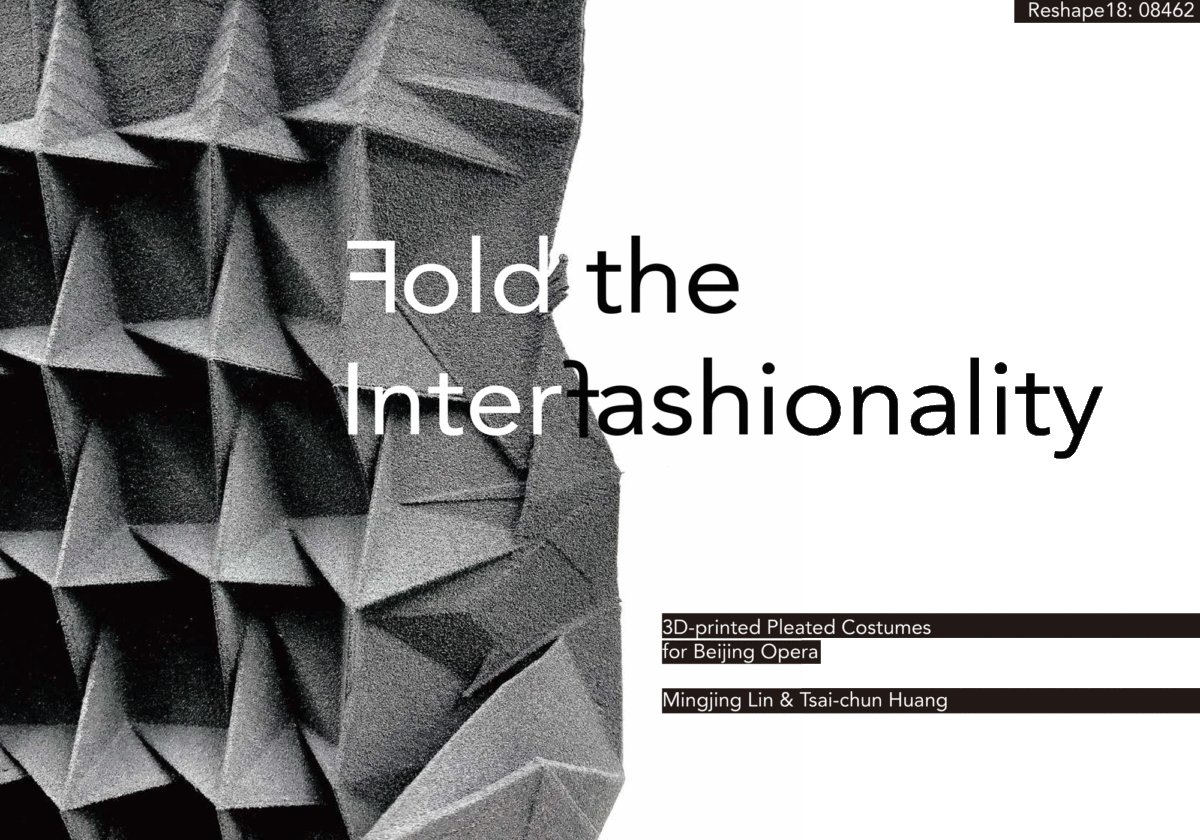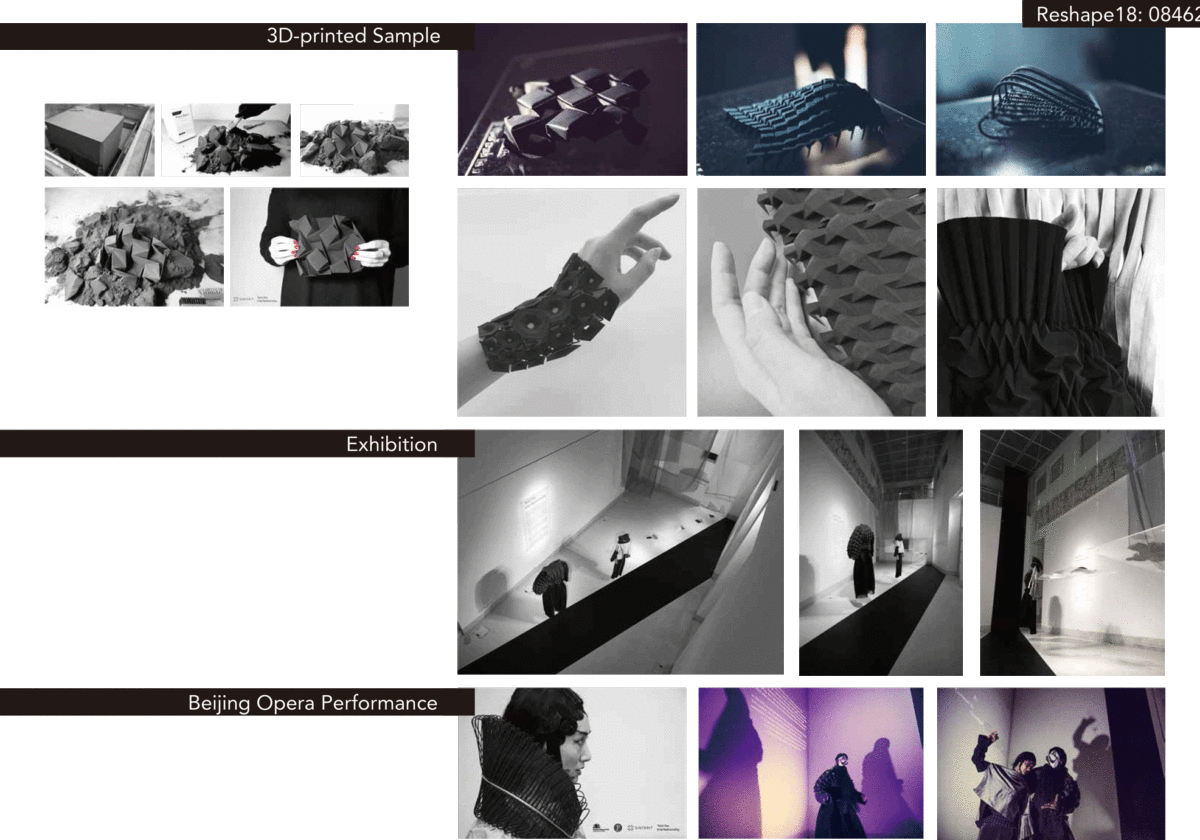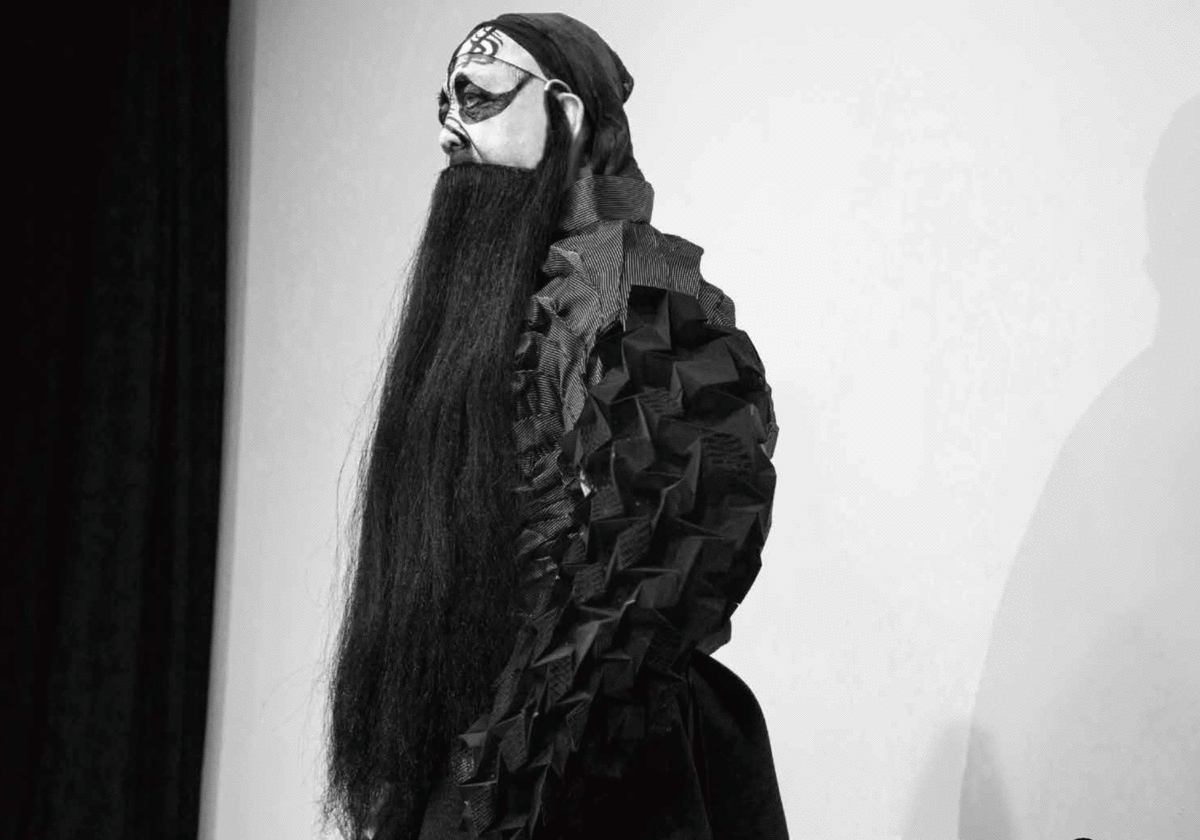RESHAPE18 | sensing materialities
wearable technology category
Fold the Interfashionality
Designers : Mingjing lin, Tsai-chun Huang

FOLD THE INTERFASHIONALITY: 3D-PRINTED PLEATED COSTUMES FOR BEIJING OPERA
Mixing new technology with traditional craft, PhD researchers from the RCA, Mingjing Lin and Tsai-Chun Huang, utilise the newest developments in 3D printing and traditional Eastern pleating to create a never- before-seen costumes for an exclusive performance of ‘Farewell My Concubine’ by Beijing Opera singers at the RCA on 1 December 2017. This performance will inform wider research into the relationship between movement, the body and fashion.
This research project examines the future of bringing together 3D printing with pleating and the performance of traditional Beijing opera (or Peking Opera) by creating new pioneering costume. These keep the same shape and form of traditional costumes, but offer more subtlety by using monochrome colours and less embellishment, in keeping with contemporary aesthetics. The 3D-printed parts have been printed using a ground-breaking SLS (selective laser sintering) technique from 3D printers Sinterit creating pleated and woven garments that are as soft and pliable as textiles.
The intention of introducing these digitally printed garments is to see how they inform the performance. The garments are designed using a parametric algorithm to translate a traditional pleating structure which can be applied to print the clothing. In contrast to popular 3D printed fashion that is often rigid and acts like body architecture, the costumes created using this new system are soft and moveable. Thus, softness and fluidity offer a new dialogue between garments and movement.
In ‘Farewell My Concubine’, 3D printing, pleated textiles and performance challenge the existing materiality and aesthetics in digital culture. The texture of the 3D printed textiles move away from heavily embroidered traditional costumes. This creates a new aesthetic and ease of movement which will change the classic opera and offers inspirations to the performance, appealing to broader audiences.
Finally, we are ambitious that this project will evoke new thinking. Cultural exchange is at the core of this research. Following Inter-fashionality 2016, we are focused upon conversations between the East and the West, modern and tradition, technology and handicraft. We aim to radically challenge cultural thinking about fashion, textiles and its performance.
The early form of 3D printing, known as additive manufacturing, was developed in the 1980s.
It was originally used as a rapid prototyping method in product design and architecture. In 2008, when an important technique of fused deposition modeling (FDM) became redundant, 3D printing became commercially viable within a relatively short time. No longer a laboratory experiment, 3D printing now covers several realms, including fashion, jewelry, medical and dental products, architecture, industrial design, and aerospace engineering.
Like other great inventions, 3D-printed fashion started with small ideas and avant-garde experiments. In 2010 that Dutch designer Iris Van Herpen showed a 3D printed haute couture piece during Amsterdam fashion week. Since then more and more designers have started to use this technology in their design with the help of commercial 3D printing machines. Since fashion is a concept of trends and popularity, and is a phenomenon in which the avant-garde influences all fashion culture, 3D printing starts to bring new conversations between technology and fashion.

PLEATING
Pleating is an ancient technique that has been on and off trend over the years. It was not until recently, that couture houses in Paris resurrected pleating techniques, and that people again cast their attention to this fabrication method. In 2016, the annual costume exhibition Manus x Machina at the Metropolitan Museum of Art listed ‘pleating and folding’ as one of the important sets of costume skills in fashion.
In fashion history, pleating reflects the evolution of technology. Examples include: the loin cloth which needed to pleated anew by hand every time after washing (Egypt, 2200 BC); the cardboard pleating technique by French fan-maker Martin Petit (c.1760) which is still widely adopted in today’s fashion industry; Fortuny pleats (c.1900) the pleating technique of which still remains mysterious; the contemporary pleating master Issey Miyake, who uses stretch yarn in woven textiles to shrink fabric automatically. However, even the latest pleating techniques have their own limitations of pattern and manufacturing which lead researchers to seek what the future pleat could be.
This project is an experiment that proposes 3D printing techniques as a further evolution, for the future of pleating. By devising an algorithm to create the 3D pattern and using soft 3D- printing materials, we are able to create patterns for more complicated pleats, which cannot be produced by conventional methods.


